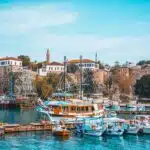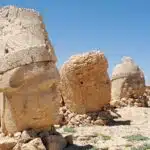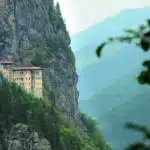Set near the Dardanelles Strait in northwestern Turkey, the ancient city of Troy offers a captivating blend of myth and archaeology. Immortalized in Homer’s Iliad, this UNESCO World Heritage Site invites travelers to walk through layers of history, from Bronze Age settlements to Roman ruins. Whether you’re a history buff, a mythology lover, or simply curious about ancient civilizations, this destination delivers a memorable experience.


Time-Travel Through Troy Ancient Layers
The archaeological site reveals nine distinct layers of settlement, each representing a different era. From early fortifications to Roman-era structures, the ruins showcase how Troy evolved over 3,000 years.
Highlights of the Site
- City Walls & Gates: The massive stone walls from Troy VI are especially impressive. Don’t miss the “Homeric” walls and the reconstructed Gate of Troy, which hint at the city’s legendary defenses.
- Theatre & Agora: These public spaces reflect the social life of later inhabitants. The small Roman theatre still echoes with ancient stories.
- Schliemann’s Trench: A visible cut through the site where early excavations began, offering a glimpse into the city’s layered past.
For a deeper understanding, visit the Troy Museum, located just 800 meters from the ruins. It houses pottery, tools, and sculptures unearthed during excavations, and features interactive exhibits that bring the city’s history to life.
🐴 Legendary Troy: The Trojan Horse & Epic Tales
One of the most iconic symbols of Troy is the Trojan Horse. While the original may be legend, a large wooden replica stands near the entrance, perfect for photos and storytelling. It’s a nod to the cunning strategy that, according to myth, led to the city’s fall.
The surrounding region is steeped in mythology. From the love story of Helen and Paris to the wrath of Achilles, these tales continue to inspire literature and film. If you’re interested in Greek mythology, Troy is a must-see.
Travel Tips for Visiting Troy
Spring (April–June) and autumn (September–October) offer mild weather and fewer crowds. Summer can be hot, and winter may bring rain, so pack accordingly.
Water and sunscreen
Comfortable shoes for uneven terrain
A hat or umbrella for shade
The site is located near the village of Tevfikiye, about 30 minutes from Çanakkale. You can reach it by car, dolmuş (minibus), or as part of a guided tour. The nearest airport is Çanakkale Airport, with connections from Istanbul, a vibrant city that often serves as the gateway to Turkey’s historical wonders.(minibus), or as part of a guided tour. The nearest airport is Çanakkale Airport, with connections from Istanbul
Aegean Flavors & Cultural Etiquette
After exploring the ruins, head to Çanakkale for a bite. The region offers delicious Aegean cuisine, including fresh seafood, lamb kebabs, and meze platters. Many restaurants overlook the water, making it a great spot to unwind.
While visiting the site, be respectful of its historical significance. Stick to marked paths, avoid touching fragile structures, and follow local guidelines to help preserve this cultural treasure.
The Journey Beyond the Ruins
As your visit unfolds, you’ll realize Troy offers more than historic ruins—it’s a portal into humanity’s shared imagination. Standing amid centuries-old stones, you’ll witness the intersection of myth, memory, and discovery. Every pathway tells a story, every vista invokes reflection.
Before you move on to your next destination, take a moment to absorb what you’ve experienced. Whether it’s the legends that brought you here or the quiet presence of ancient walls, this adventure leaves you with something timeless—a deeper appreciation for the narratives that shape us.










